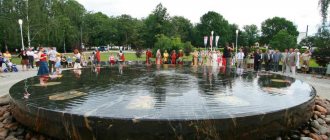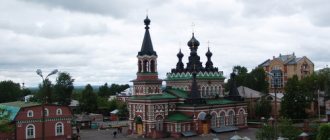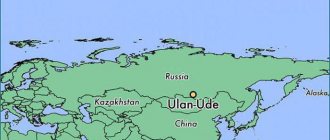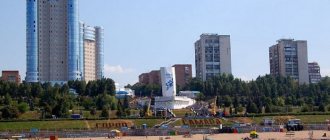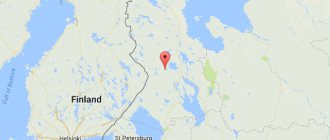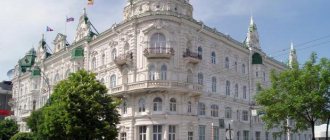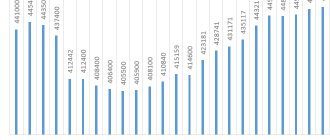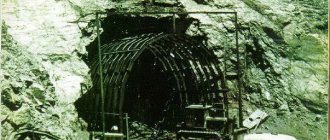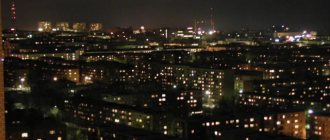Ulyanovsk is known primarily for the fact that V. Lenin was born here. But this ancient Russian city can rightfully be proud of many other events in its history. The indigenous population of Ulyanovsk can tell a lot about the sights and famous residents of the city. This large economic center of the Volga region is similar to many Russian cities, but still has its own face and characteristics. Let's talk about the population of Ulyanovsk, how the demographic and economic situation differs in this regional center.
Geographical position
The city is located on the banks of two rivers, the Volga and Sviyaga. Ulyanovsk is separated from the capital of our homeland by almost 900 km. The settlement is located on a hilly area; the population of Ulyanovsk initially preferred the more hilly right-bank part, where the elevation changes are up to 60 meters. The left bank is flatter, but less populated. Ulyanovsk is located in the center of the European part of Russia, on the Volga Upland. On average, the city lies at an altitude of 80-160 meters above sea level. Ulyanovsk is surrounded on all sides by deciduous forests. The strategically favorable location on the routes from the European to the Asian part of the country allowed the city to develop steadily over several centuries. Today the area of Ulyanovsk is about 320 square meters. km.
Train Station
The Ulyanovsk-Ural railway station is a highway that leads to Moscow, Samara, Ryazan, Penza, Chelyabinsk, Ufa, Orenburg, Yekaterinburg. The total length of the route is 1879 km. It is part of the E30 highway and the AH6 Asian route. The road surface is asphalt.
City `s history
A settlement on the banks of the Volga appeared in 1648 by decree of Tsar Alexei Mikhailovich. A fortress was created here to defend the borders of the state from invaders. The city successfully withstood the defense from the army of Stepan Razin, for which it received a coat of arms. Here in 1774, Alexander Suvorov personally interrogated Emelyan Pugachev. In 1780, Simbirsk became a provincial town. In 1864, a terrible fire destroyed three quarters of the city, and its “new” history began. In 1870, the future leader of the proletariat V. Ulyanov was born in the city. In 1898, a railway was built to Simbirsk, which contributed to its growth and development. In 1924 it was renamed Ulyanovsk. During World War II, many enterprises from Moscow were evacuated here. After the war, the city became a major industrial and scientific center of the Volga region.
Hymn
In the land where the great Volga Flows freely along the Crown, Simbirsk has established itself for a long time By the will of the creator people! Our ancestors lovingly raised this bright and valiant land... Ulyanovsk! For the glory of Russia, create and prosper for centuries!!!
The city spreads out like a bird, in the expanse of river banks: Be proud, regional capital, of the deeds of your fellow countrymen! From the shining blue of Trans-Volga into the distance of Trans-Volga grow... Ulyanovsk! For the glory of Russia, create and prosper for centuries!!!
Your melodies are majestic, your traditions are strong in faith, always be the engine of the power and the wings of a glorious country! Develop, subduing the elements, Find stars of new victories... Ulyanovsk! For the glory of Russia, create and prosper for centuries!!! Ulyanovsk! For the glory of Russia, create and prosper for centuries!!!
Words by N. Maryanin, music by S. Lyamin.
Approved on June 9, 2008.
Climate and ecology
Ulyanovsk is located in the temperate continental climate zone. There are warm, sometimes even hot, short summers and short winters, sometimes with severe cold. The warmest month in the city is July, when the thermometer averages around +20 degrees. And the coldest month is February, when the thermometer drops to minus 10. The peculiarities of the local climate include strong winds, which especially annoy residents in January and February. In recent years, due to deforestation, the windiness has only increased. The climate of Ulyanovsk is drier than in other cities in central Russia. On average, there is 470 mm of precipitation per year. The driest month is February, and the wettest month is October.
The population of Ulyanovsk always notes the favorable environmental situation in their city. A large amount of greenery cleanses and refreshes the air well, so it’s easy to breathe here. The proximity of such a large river as the Volga also influences the good feeling. Although the condition of the rivers, especially Sviyaga, causes concern among environmentalists. A large amount of waste is dumped into them, and this greatly pollutes the waters and shores. Social protection of the population (Ulyanovsk) warns residents that swimming in rivers is dangerous.
Number of inhabitants
Observations on the number of townspeople begin in 1780, when 10.5 thousand people lived in Simbirsk. The city grew steadily, and by the beginning of the 20th century, 44 thousand people already lived here. By the beginning of World War II, the population of Ulyanovsk reached 105 thousand people. And by 1959 this figure had doubled. The population steadily grew by several tens of thousands of people and by 1985 reached 556 thousand. Positive dynamics continued until 1998. At that time, 679 thousand people lived in Ulyanovsk. After this, a small but stable decline in the number of citizens began. By 2009, there were 603 thousand people in the city, and since then the positive dynamics in the number of residents has returned. Today in Ulyanovsk there are 621,500 residents.
Population density
The quality of life of people in a city is often related to the number of people housed in one area. Thus, the population density of Ulyanovsk is 1.961 thousand people per square meter. km. This is a fairly high figure for Russian cities. The national average density is about 5 people per square meter. km. But this takes into account the entire territory of the state, including the almost uninhabited areas of the North. In large cities this figure ranges from 2 to 4 thousand people per square meter. km. Ulyanovsk, whose population has barely exceeded half a million, is characterized by high density, which affects the city’s traffic congestion and problems in providing residents with various social services.
Population distribution
Considering the distribution of Ulyanovsk residents throughout the city, it can be noted that the population of the districts is uneven. The historical center is located in the Leninsky district of Ulyanovsk. Many buildings of the past have been preserved here; most of the cultural institutions and administrative buildings are located here. Therefore, there are the fewest residents in this area (117 thousand people), but this is the most prestigious part of the city with the highest housing prices. A much more populated area is Zasviyazhsky, about 220 thousand citizens live here. This part of the city is built up with “Khrushchev” buildings, which are located quite closely to each other. This area is one of the most disadvantaged in terms of transport accessibility.
Also a densely populated area of the city is Zheleznodorozhny (85 thousand people), housing here is newer than in Zasviyazhye, and the density of buildings is lower. The newest and most spacious is the Zavolzhsky district. It is located on the left bank, which has a flatter topography and is therefore often subject to floods. Today the population of the Zavolzhsky district of Ulyanovsk is 218 thousand people. But since the area is very spacious and large, the density here is the lowest in the city. Today Ulyanovsk is gradually growing due to the absorption of nearby villages and the construction of new cottage villages on the outskirts. This is gradually changing the population distribution map.
Program of events for the current year
Figure 2. Creative groups perform on the main city square
According to tradition, on the holiday, entertainment events will be organized in socially significant places of the city:
- master classes;
- work of thematic platforms;
- local creative groups will perform;
- festivals will open;
- tournaments and sports competitions;
- Russian pop stars will perform;
- festive fireworks.
In 2022, the townspeople were congratulated by such famous performers as Dzhigan, Misha Marvin and the group Artik & Asti. This year the program will still be refined by the city mayor's office. Detailed information can be found on the official website of the administration.
The plot of the TV channel “Reporter 73” is “City Day. Ulyanovsk 370".
Demographics
In general, the population of Ulyanovsk, in terms of its demographic characteristics, fits into the average picture for the country. So, life expectancy here is about 70 years. The mortality rate is gradually decreasing, but is still steadily outpacing the birth rate. The city's growth is driven by migrants, who are attracted by the opportunity to find work in Ulyanovsk. In connection with the aging of the city's residents, the employment center (Ulyanovsk) expresses alarm, since the growing demographic burden creates increasing problems with fulfilling social obligations to residents. The ethnic composition of the city differs slightly from the overall Russian picture. 77% of the population call themselves Russians, 10% are Tatars, 7% are Chuvash, 1% are Ukrainians and Mordvins each. Other nationalities are represented by groups of less than 1%. The main language of communication is Russian.
Ulyanovsk Airport
In Ulyanovsk there is a civil airport of federal significance "Barataevka". The distance of the airfield from the city center is 3 km, south of the small settlement of Barataevka, which is part of the city. The airport belongs to class B1. Airfield type: civil. Also used for training flights at the Ulyanovsk Flight School of Civil Aviation. The airport is open 24/7.
Barataevka Airport serves major Russian airlines - RusLine, Aeroflot, Utair, IrAero - which fly to the following destinations: Moscow, St. Petersburg, Anapa, Adler, Simferopol, Tel Aviv, Yerevan, Minsk, Astana.
The second international airport of Ulyanovsk “Ulyanovsk-Vostochny” also has the status of federal significance. Serves passenger flights. The year the airfield was founded is 1983. The airport's runway is one of the longest in the world: length - 5000 m, width - 105 m.
Planes from Ulyanovsk-Vostochny Airport fly to the following destinations: Kazan, Yekaterinburg, Krasnodar, Novosibirsk, Moscow, Perm, Antalya, Delhi, Sochi.
Employment
Ulyanovsk is one of those cities in which several serious enterprises successfully operate, ensuring the stability of the settlement’s economy. For the city, an important economic role is played, first of all, by the automobile plant, and the aircraft manufacturing complex and the instrument-making industry are also serious employers and taxpayers. The Employment Center (Ulyanovsk) notes that there are always vacancies in the city, especially for people with high technical qualifications and for representatives of blue-collar professions. Difficulties with finding employment are experienced by university graduates without experience and women 30-40 years old with higher education.
